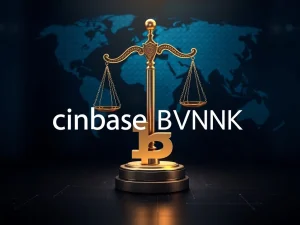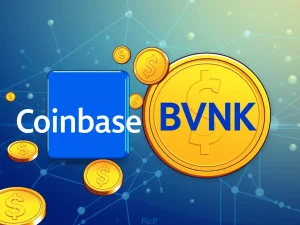DeFi Unleashed: Why Fintech Needs Decentralized Finance in the Back

Are you ready to see how the world of finance is quietly undergoing a massive transformation? The future of financial technology, or Fintech, isn’t just about slick user interfaces anymore. It’s increasingly about the powerful engine running behind the scenes: Decentralized Finance (DeFi). Imagine a ‘DeFi mullet’ – a clean, user-friendly fintech front end paired with the robust, efficient power of DeFi in the back. This isn’t just a catchy phrase; it’s becoming an essential strategy for fintechs looking to stay competitive.
Why Traditional Fintech Infrastructure Falls Short
Today’s fintech companies excel at providing fantastic user experiences, making finance accessible and intuitive. However, many are still shackled by their reliance on legacy traditional financial (TradFi) infrastructure. This old guard is often:
- Siloed and slow to adapt or deploy new features.
- Costly to build, maintain, and run, impacting profitability and pricing.
- Inflexible, limiting the types of innovative products and services fintechs can offer.
This dependency creates inefficiencies, restricts product innovation, and introduces potential infrastructure risks. It’s becoming clear that fintechs have a strong incentive to explore alternatives, specifically leveraging autonomous, credibly neutral public infrastructure like DeFi.
The Transformative Power of DeFi
The potential of DeFi as a back-end infrastructure is undeniable. Consider international payments: a traditional wire transfer can cost $30-$50 and take days to settle. A stablecoin transfer, powered by Blockchain Integration, costs cents and settles in seconds. This dramatic improvement isn’t limited to payments.
Decentralized Finance offers 24/7/365 infrastructure for trading, lending, and borrowing. Key benefits include:
- **Instant Settlement:** Transactions finalize almost immediately.
- **Open Access:** Available to anyone with an internet connection.
- **Deep Liquidity:** Often provides better price execution and yields compared to traditional venues.
- **Cost-Effectiveness:** Significantly lower transaction fees.
By integrating their compliance-ready front ends with DeFi protocols, fintech companies can offload complex back-end operations and focus on what they do best: creating seamless user experiences. This Crypto Integration opens vast opportunities for innovation and drives more liquidity onto the blockchain, creating a positive cycle for adopting the ‘DeFi Mullet’.
Is DeFi Ready for Mainstream Fintech Integration?
The DeFi ecosystem has matured significantly. Numerous protocols have demonstrated their reliability and security, managing billions in assets through immutable, governance-minimized designs. This maturity gives fintechs confidence and, crucially, more control over their infrastructure, a critical point highlighted by recent failures in traditional finance-linked services that trapped user funds.
Furthermore, institutional interest is growing. Major players are exploring tokenized funds, stablecoin solutions, and strategic Crypto Integration. Regulatory clarity is slowly emerging, paving the way for broader adoption. The shift is tangible and accelerating.
What Does the Future Hold for Fintech and DeFi?
Expect to see increasingly sophisticated products emerge from advanced fintech companies in the coming years, powered by Decentralized Finance. These will include:
- Onchain savings accounts offering potentially higher yields.
- Instantaneous international payments.
- Crypto-backed loans and other novel credit products.
For users, this transformation will largely be invisible, facilitated by technologies like smart wallets and account abstraction that maintain the familiar Web2-like user experience fintechs excel at. Early adopters of this Blockchain Integration will gain a significant competitive edge. However, unlike traditional finance where building from scratch is often necessary, DeFi’s open infrastructure means even latecomers can benefit from existing network effects and liquidity without starting from zero.
Addressing Concerns: Decentralization and Regulation
Some skeptics worry that fintech and institutional involvement might erode DeFi‘s decentralization due to regulatory compliance needs. While understandable, the opposite outcome is more likely. It’s unrealistic to expect every decentralized protocol to navigate the fragmented regulatory landscape across every global jurisdiction.
A more sensible approach is to regulate the applications and interfaces that users interact with, rather than the underlying, credibly neutral protocols. For this model to succeed, protocols must adhere to principles of credible neutrality:
- No preference for specific individuals or outcomes.
- Open-source with publicly verifiable execution.
- Simplicity and understandability.
- Infrequent, carefully considered changes.
Just as protocols like HTTP and SMTP are free, open, and unregulated, with oversight applying only to the clients (browsers, email apps), the same logic can apply to governance-minimized, immutable DeFi protocols. This constraint encourages builders to create genuinely decentralized, trustless systems, providing the most neutral and powerful infrastructure for fintechs to build upon and access growing network effects.
Let the Mullet Grow: The Inevitable Convergence
The ‘DeFi mullet’ is more than just a concept; it represents a fundamental structural shift in finance. For DeFi to achieve mass adoption, it must be accessible through regulated, user-friendly channels – precisely where fintechs excel. Conversely, for Fintech companies to remain relevant and offer the best services and rates to their customers, they must embrace the efficiencies and opportunities that Decentralized Finance provides. Those who hesitate risk falling behind, much like traditional retail banks lost market share to the first wave of fintech innovators. This powerful convergence isn’t just possible; it’s becoming an inevitable future for finance.







